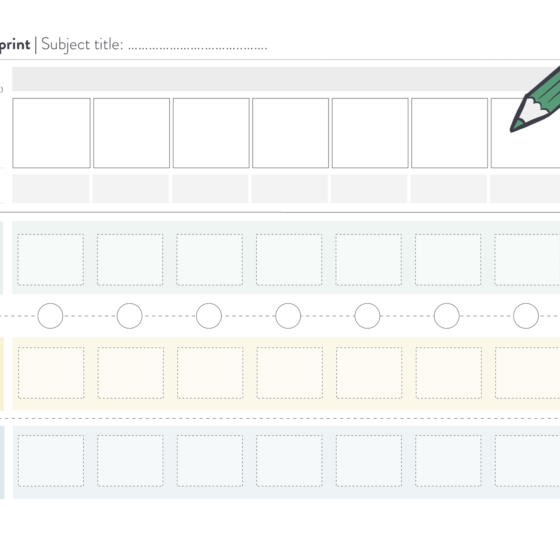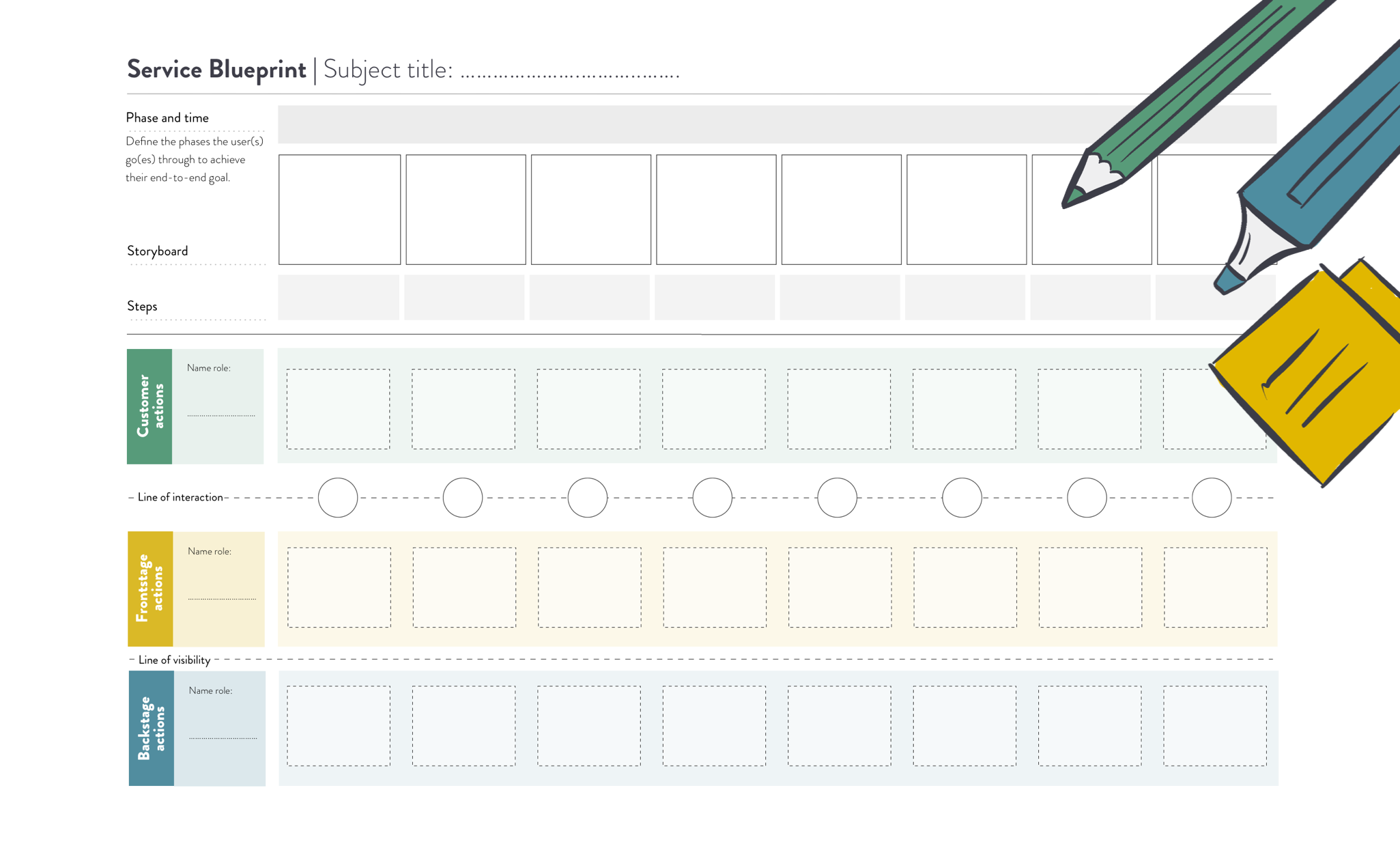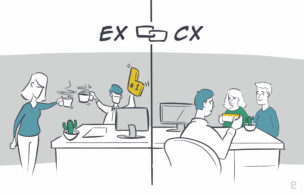You create a service blueprint because you want to achieve a goal, for example efficiency gains or improved internal collaboration. The service blueprint is a tool that gives you insight into bottlenecks in your service, so that you can get to work on them.
Download Blueprint template
You get a first impression of how you use the service blueprint and what it takes to complete it. Very enlightening, and one of the most effective things to stimulate customer-centric collaboration.
Good luck!
getting started with a service blueprint
Based on the defined goal, you start with a story, a scenario. For example, a scenario is a customer journey (or part of it) with a beginning and an end: someone wants to achieve a goal and the scenario illustrates the path he or she is following. Take a look at the example scenario of a dining experience in a restaurant. Based on the scenario, you further develop the service blueprint.
Ideally, you collect information criss-cross through the organization and organize a joint session. That session feeds you with information from interviews, surveys, or other sources. It can also be useful to work out a first draft of the service blueprint yourself. This short exercise is a good preparation for the joint session: you will then be familiar with the methodology and may be able to do some preliminary work.
the elements of a service blueprint
The purpose of the service blueprint is to clearly map all insights. For this we use the following elements:
- Scenario: the customer’s story, including goals. This acts as the ‘coat rack’. Try to think in terms of “scenes” to define the various steps.
- Customer actions: all the steps a customer takes, what he or she does and thinks within the scenario. You will often find this in the customer journey map.
- Touchpoints: the ways/channels through which a customer interacts with your organization at every step. This can be digital, but also offline.
- Front stage actions: the actions of the organization that are visible (or noticeable) to the customer.
- Backstage actions: the actions of the organization that are invisible to the customer, but do contribute to the service and optimal customer experience.
- Supporting processes: all processes that ensure that the actions on the front and backstage are possible.
from single elements to a holistic overview
The elements find their place on the service blueprint. You initially work out the service blueprint row by row. As mentioned, you start with the scenario, then you look at the actions of the customers and that’s how you finish the list. In doing so, you keep reflecting and as soon as you have a reasonably complete picture, you go through the service blueprint as a whole again. Then pay attention to the logic, the completeness of the steps and dependencies. You identify which steps influence each other and which are necessary to initiate the next step. You can make these connections both horizontally and vertically. After all, a frontstage action can influence a backstage action, and vice versa.
Most importantly, determine whether the service blueprint helps you achieve your goal. Does the information you have collected give you enough input to define actions?
download the Essense service blueprint template
The service blueprint is a valuable tool in improving the customer experience. It is therefore also important to devote sufficient time and attention to it. After all, you want to know exactly which buttons to turn for better results. At Essense, we usually assume five to ten days of work to work out a service blueprint in detail. Of course you can also do a first finger exercise in a few hours. Our download helps you with that: you get a first impression of how a service blueprint works and what it takes to complete it. Very enlightening, and one of the most valuable and fun things to do, we think.
Good luck!
Download Service Blueprint
Please add your details below and we’ll mail you our service blueprint template guide with tips and instructions.











